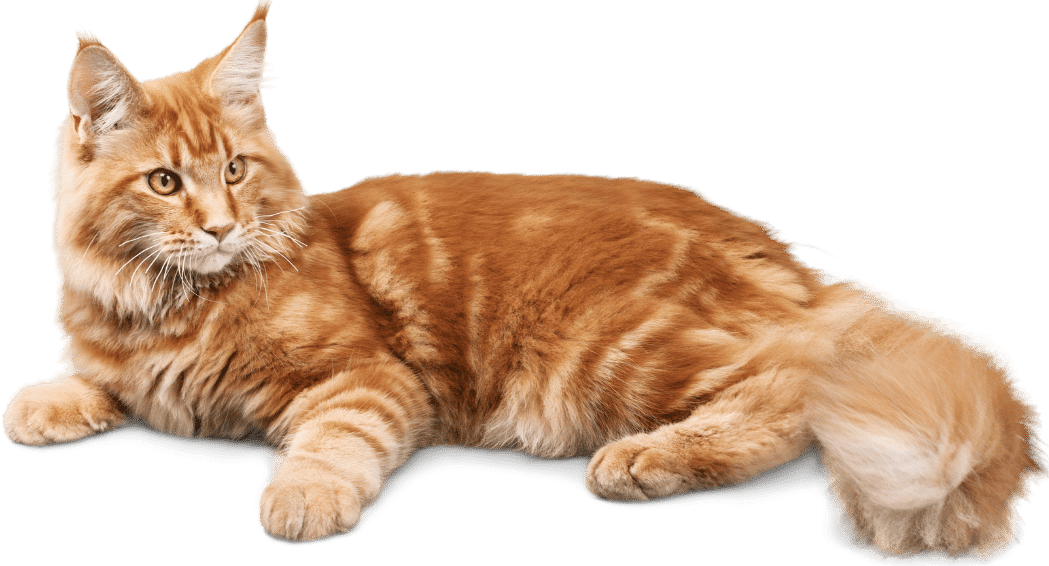Persian Cat Breed Information, Characteristics & Care
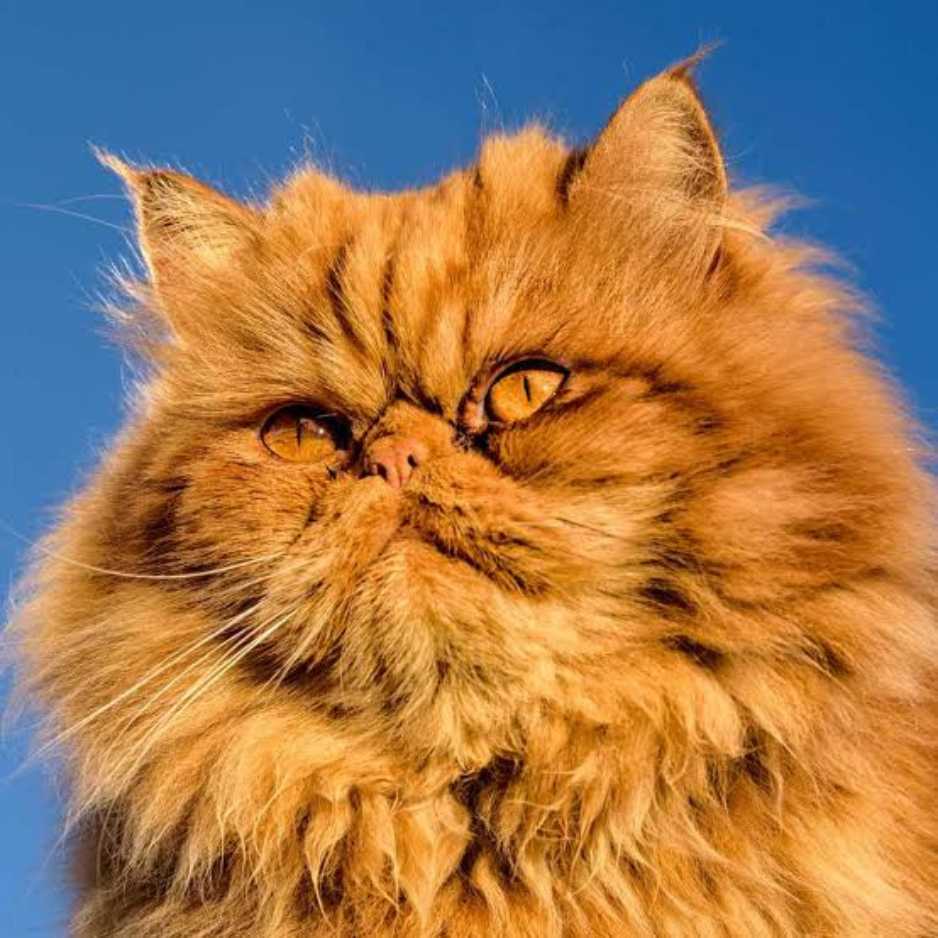
Persian cats are known for their luxurious long coats, serene expressions, and calm personalities, making them one of the most cherished cat breeds globally, especially among cat owners who appreciate the adult Persian with roots tracing back centuries, traditional Persian cats bring elegance and charm to any home, captivating many cat enthusiasts. In this guide, we’ll cover everything you need to know about Persian cats, including their breed standards, care requirements, and even the price range in India, according to the Cat Fanciers Association.
History and Origins of Persian Cat
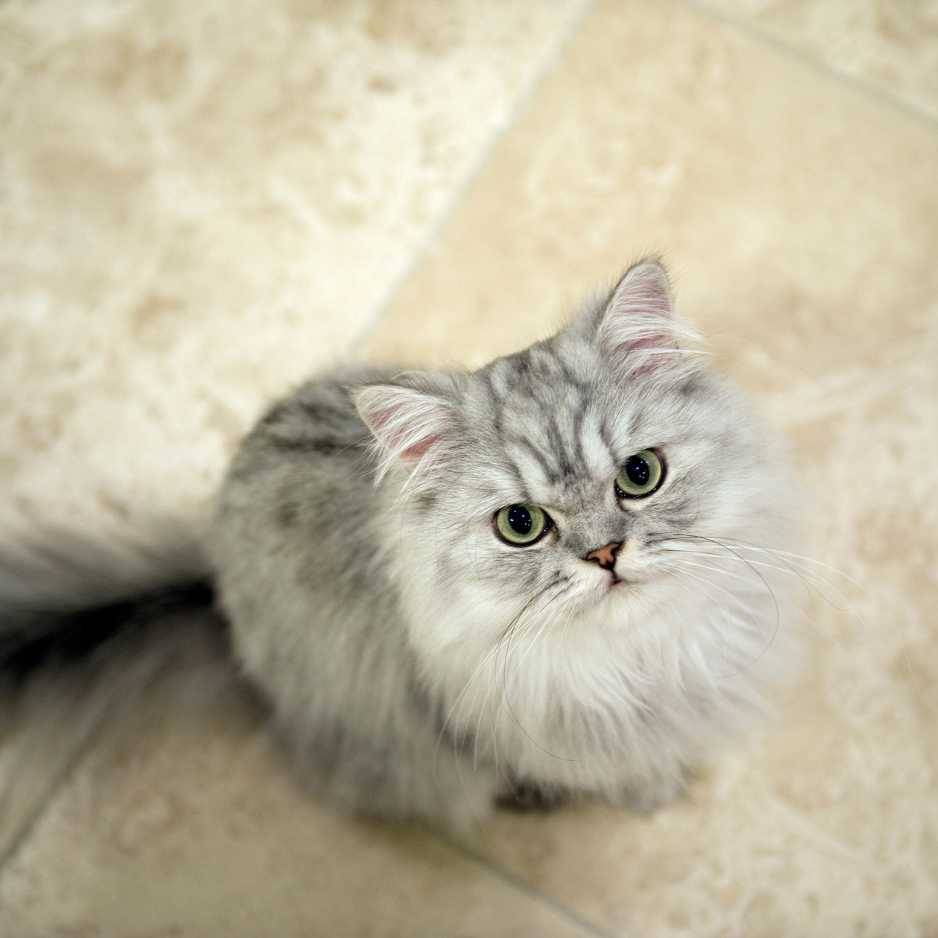
Persian cats have a rich history that dates back to the early 1600s, believed to have originated in Persia (modern-day Iran), and are known for their striking green eyes. These cats were introduced to Europe and quickly became a symbol of status and elegance, particularly popular among the aristocracy and recognized as a separate breed within the cat council, adhering to the Persian standard. By the late 19th century, Persians made their way to North America, solidifying their place as one of the most beloved breeds in the world. Today, they are prized for their beauty, calm demeanor, and affectionate nature, which is why many Persian breeders focus on these traits.
Physical Characteristics of Persian Cat
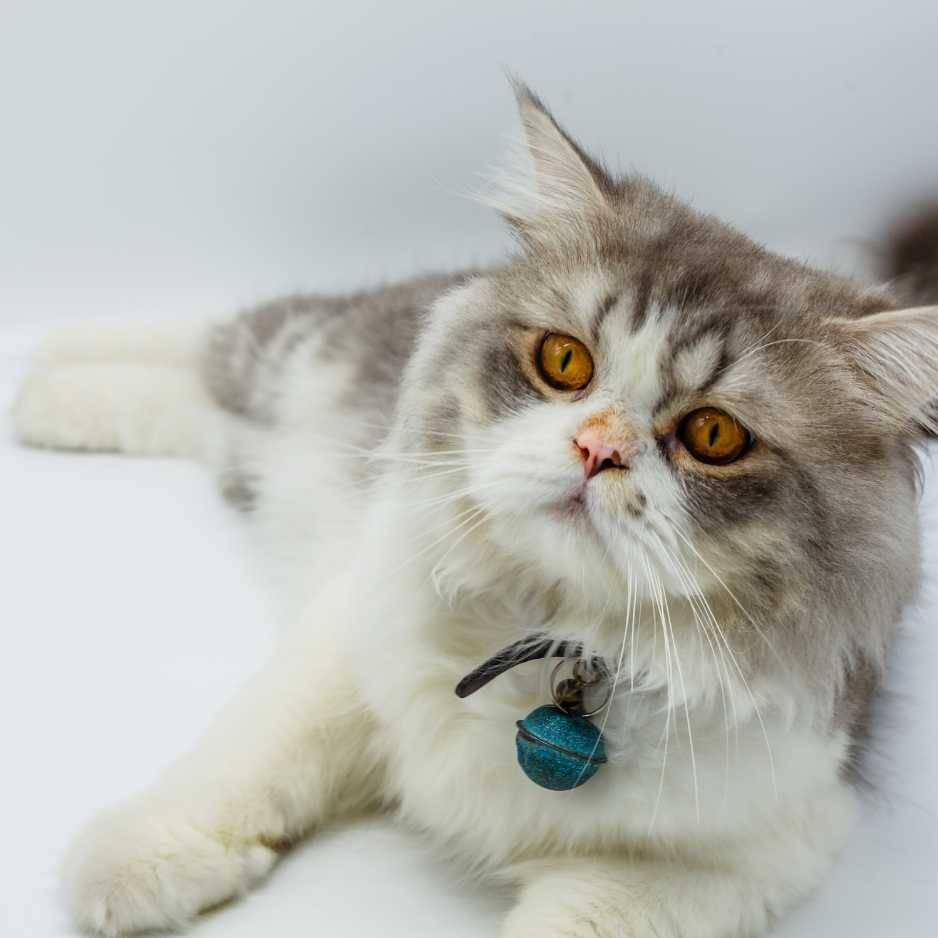
Persian cats are famous for their unique appearance, which includes striking green eyes and a luxurious coat.
- Coat: Regular grooming and the right cat food are essential for maintaining a healthy coat. Thick, long fur that comes in various colours and patterns, from solid colours to bi-colour and tabby patterns.
- Face Structure: The face structure of the Persian cat, especially the doll face Persian, is a significant factor in its breed standards. Persian cats have a distinctive face shape, with two main types – the “doll face” (traditional) and the “flat face” (modern), which is flatter with a shorter nose.
- Size: The size of your Persian cat can influence its dietary needs and the amount of cat food required. They are medium to large cats, weighing between 7–12 pounds, with stocky builds, short legs, and rounded features that give them a sweet and soft look.
Personality and Temperament
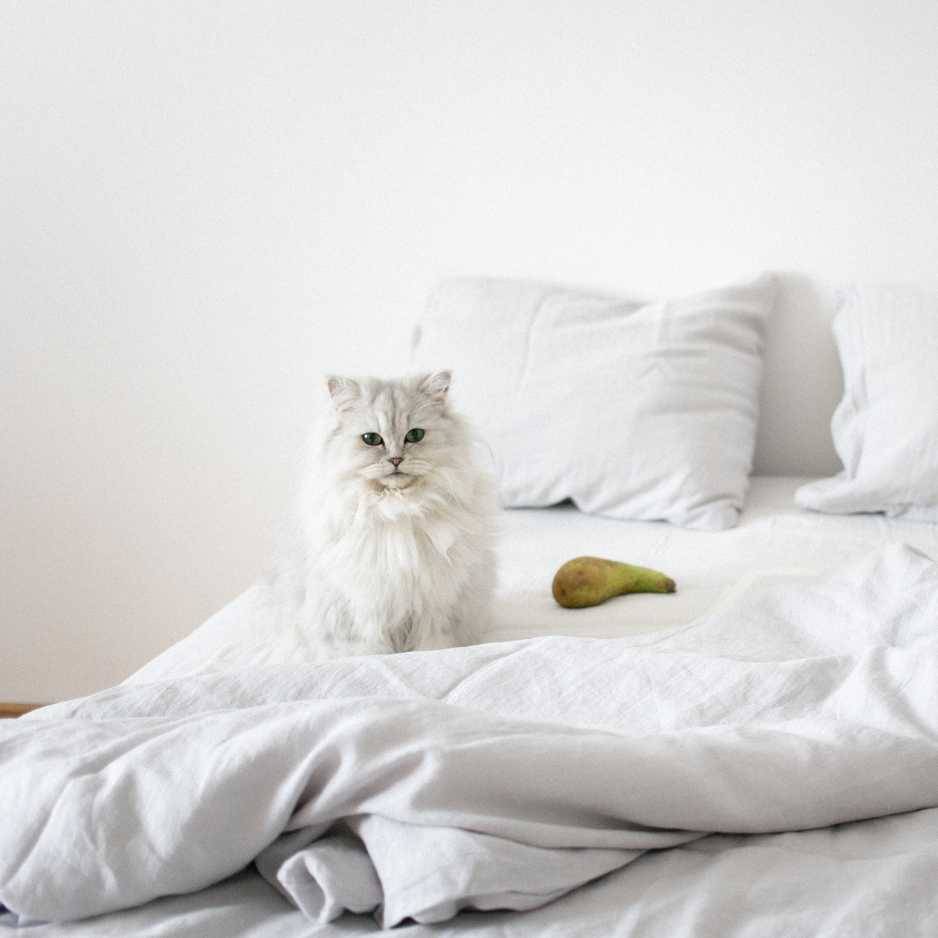
Persian cats have a gentle and calm temperament, making them ideal companions for many cat lovers. They are affectionate and bond closely with their human families, making them excellent companions. They enjoy a quiet environment and are not as high-energy or adventurous as some other breeds, such as the black cat. Persian cats typically prefer lounging and relaxing over running around, making them ideal for people who enjoy a peaceful household and a feline companion, much like a white Persian cat would, especially as they grow into adult cats.
Care Requirements for Persian Cat
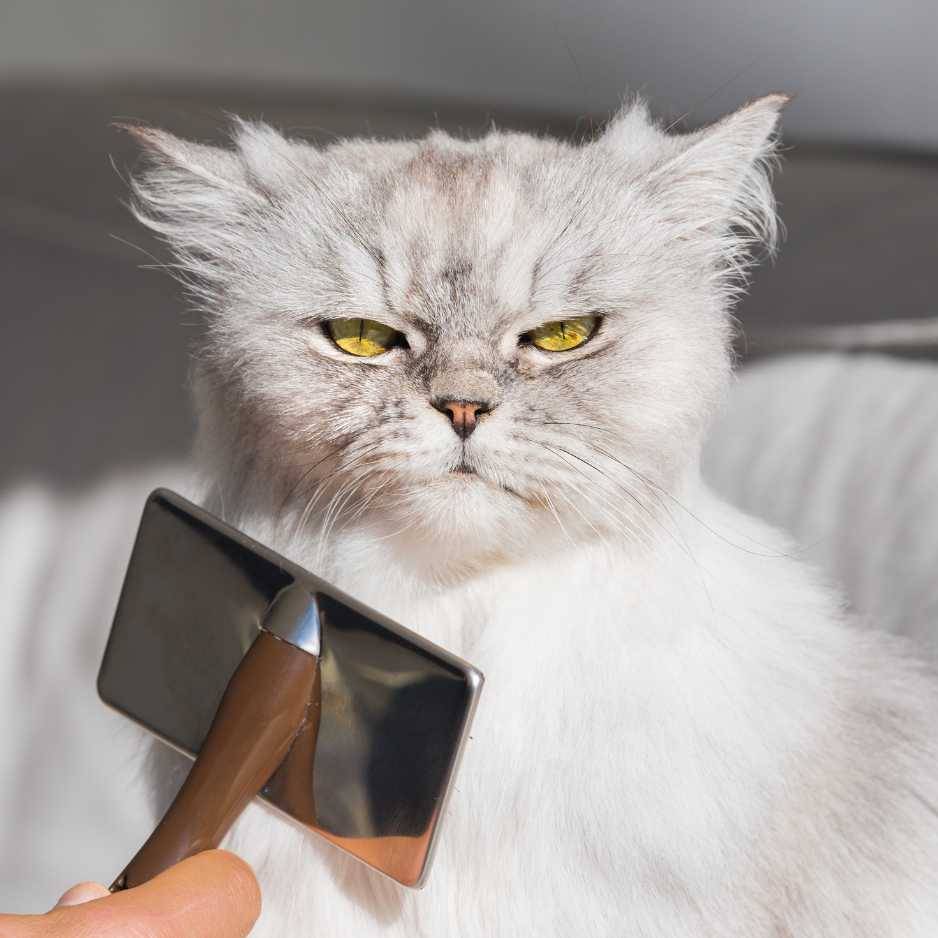
Owning a Persian cat requires a commitment to their grooming and health care:
- Grooming Needs: Grooming needs for Persian cats are essential to prevent matting, particularly for breeds like the chinchilla Persian, which are also long-haired cats. Persian cats’ long fur requires daily brushing to prevent matting and tangling, which is essential for keeping your Persian healthy. Using a wide-tooth comb or specialized care for long-haired cats cat brush can help maintain their coat’s beauty and health.
- Eye Cleaning: Their unique face structure often leads to tear staining, which is a common issue for long-haired cats like Persian cats. Clean their eyes daily with a damp cloth to prevent buildup.
- Dental Care: Persians can be prone to dental problems, so regular brushing or dental treats can be helpful.
- Bathing: Bathing a Persian cat can be beneficial for their coat, particularly for the chinchilla Persian, which has unique grooming needs. Giving your Persian cat a bath every month or two helps reduce shedding and keeps their coat soft and clean, which is especially important for the modern Persian, a long-haired cat.
Health Concerns Common in Persian Cat
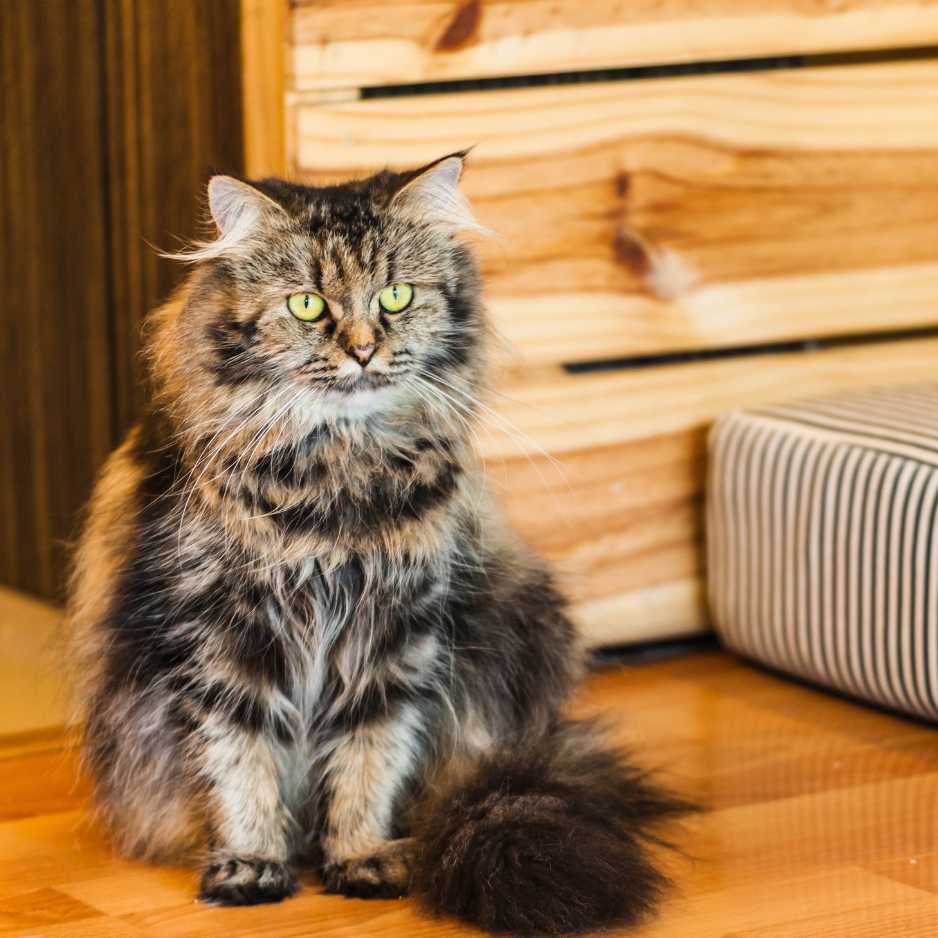
Persian cats are susceptible to a few health issues, and many breeders emphasize the importance of regular vet check-ups.
- Brachycephalic Airway Syndrome: This condition is particularly relevant for breeds of cats like the Persian, which are known for their flat faces. Due to their flat face, Persian cats may experience breathing difficulties, particularly in hot or humid weather, a concern noted by many breeders.
- Polycystic Kidney Disease (PKD) is a concern for some breeds, including the modern Persian, which is why regular vet check-ups are important. Persians have a higher risk of developing PKD, a genetic disorder that affects the kidneys, which is important for cat breeders to consider.
- Eye Problems: Persian cats are prone to various eye problems, which are important to monitor as part of their breed profile, especially in older cats. Persians are prone to tear duct issues and progressive retinal atrophy (PRA), which can lead to vision problems, affecting their eye color over time, particularly in older cats.
- Regular Vet Visits: Routine check-ups are essential to monitor and manage these conditions early.
Ideal Living Environment
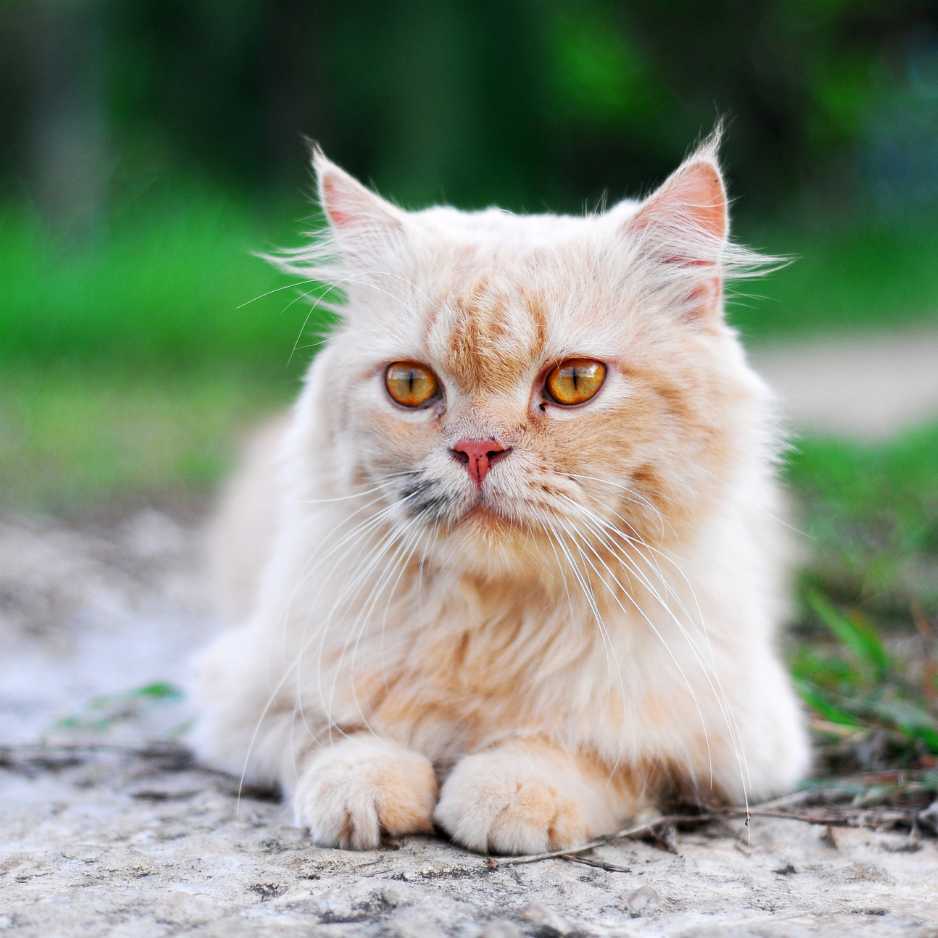
Persian cats thrive in calm, indoor environments. They are well-suited to apartments and homes without a lot of noise or commotion, making them perfect for a serene feline environment, and ideal for any domestic cat. Persians aren’t as agile or active as other breeds, so they don’t need much climbing furniture or high spots. They do enjoy cozy nooks and soft bedding, where they can relax and feel safe.
Nutrition and Diet for Persian Cat
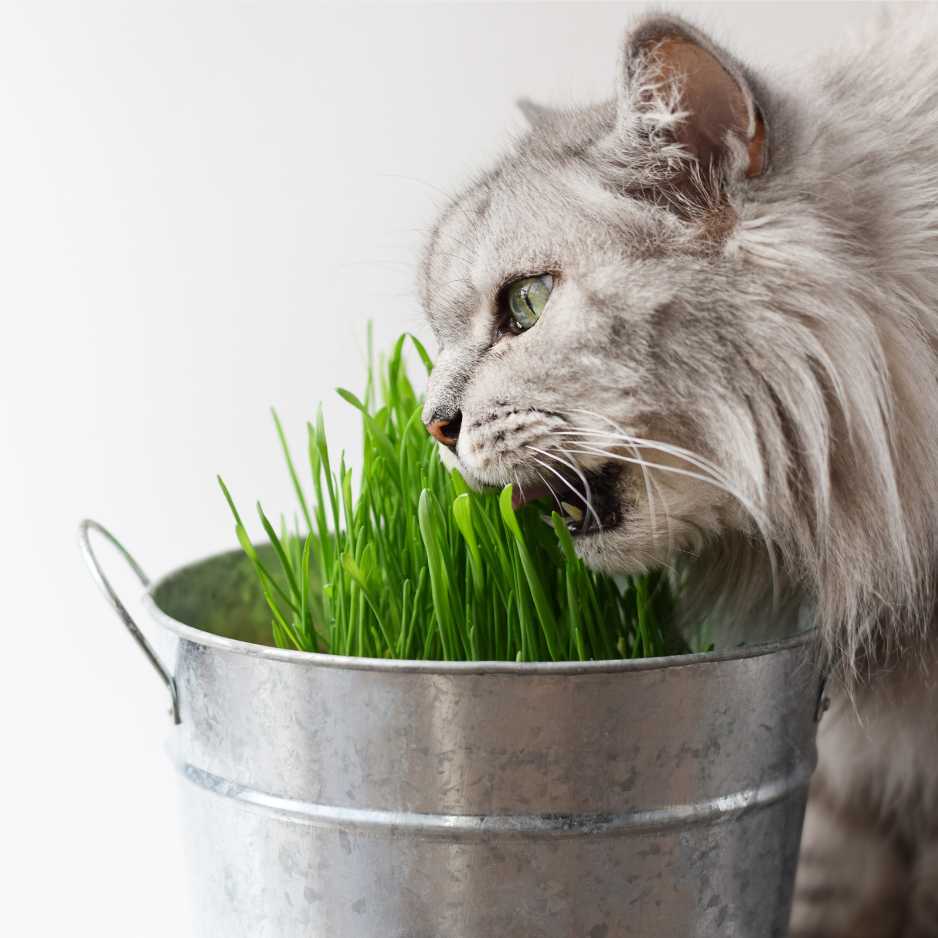
Proper nutrition is key to keeping a Persian cat healthy:
- High-Quality Food: Persian cats benefit from a balanced diet that supports skin and coat health. High-protein, low-grain diets are often ideal.
- Portion Control: Persians can be prone to obesity, so controlled portions of high-quality cat food are important for their health.
- Special Dietary Needs: Cats with specific health issues may require specialized cat food to manage their conditions. If your Persian cat has health issues, such as kidney failure or urinary problems, consult your vet for specific dietary recommendations.
Persian Cat and Family Life
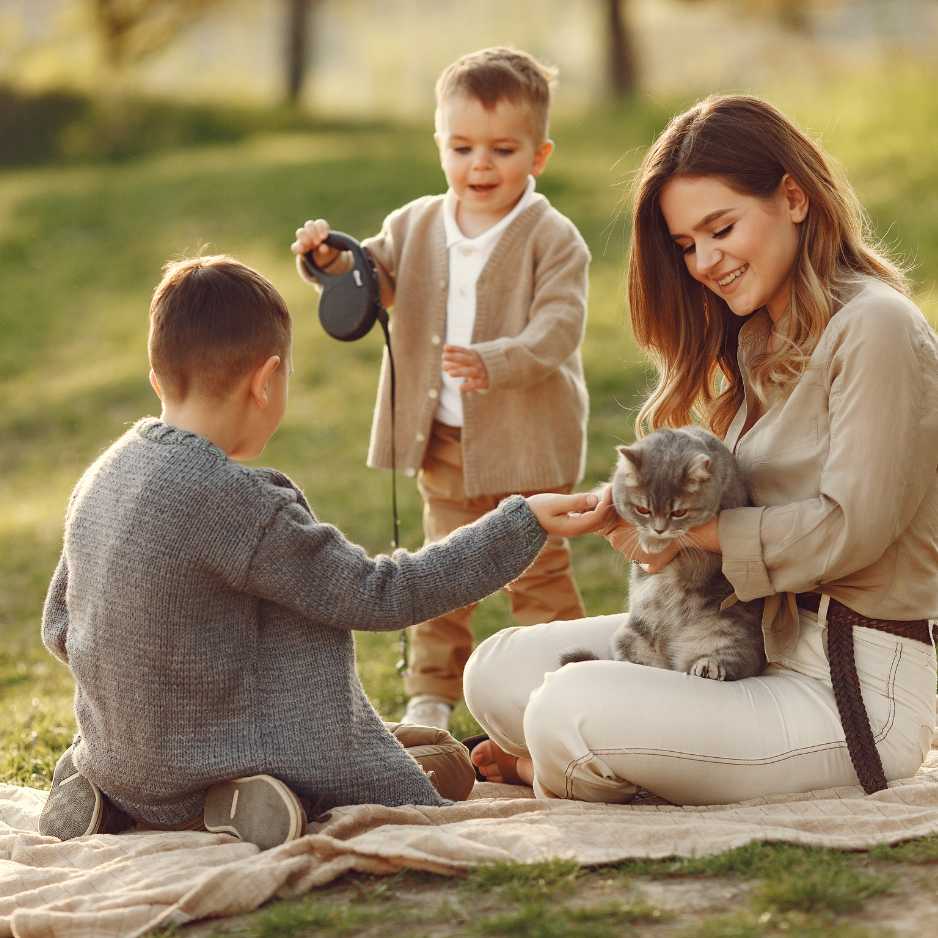
Persian cats can adapt well to family life, provided the household is calm and respectful of their gentle nature, similar to how a Siamese cat might thrive in a loving environment. They’re typically good with older children who understand how to handle pets gently. While they may tolerate other pets, they usually prefer the companionship of other calm animals or being the only pet in the home, which aligns with the Persian’s laid-back nature.
Choosing a Persian Cat: Tips for Potential Owners
Reputable Breeders: It is crucial to find cat breeders who follow the Persian breed standard to ensure healthy kittens. If you’re purchasing a Persian cat, seek out reputable breeders who prioritize the health and welfare of their cats. Look for cat breeders in the United States who can provide health certificates and allow you to meet the parents of the two Persian kittens.
Adoption Option: If you’re considering an adoption option, think about the differences between a Himalayan cat and a traditional Persian, as well as the unique traits of each breed, particularly within the Persian breed. Consider adoption as a compassionate choice for a Persian breed cat, especially for cat owners looking for a loving companion. Many animal shelters and rescue groups have Persian cats that need homes, often recognized by the World Cat Federation, including adult Persian cats.
Persian Cat Price in India
The cost of owning a Persian cat in India can vary widely depending on factors like the cat’s lineage, the breeder’s reputation, and whether you are looking for a kitten or an adult Persian.
- Standard Quality Persian Cats: ₹10,000 to ₹30,000.
- Show Quality Persian Cats: The standards for show quality Persian cats are set by organizations like the International Cat Association, ensuring they meet the Persian breed standard. ₹50,000 to ₹100,000 or more, for those with superior lineage and physical characteristics.
- Adoption Costs: Adopting a Persian from a shelter or rescue group is usually less expensive and may range from ₹2,000 to ₹10,000, making it a cost-effective option for those looking for a new breed.
Persian cat prices may also vary based on location within India, with major cities generally having higher prices than smaller towns or rural areas, influenced by the demand in the cat fancy community.
Fun and Fascinating Facts About Persian Cat
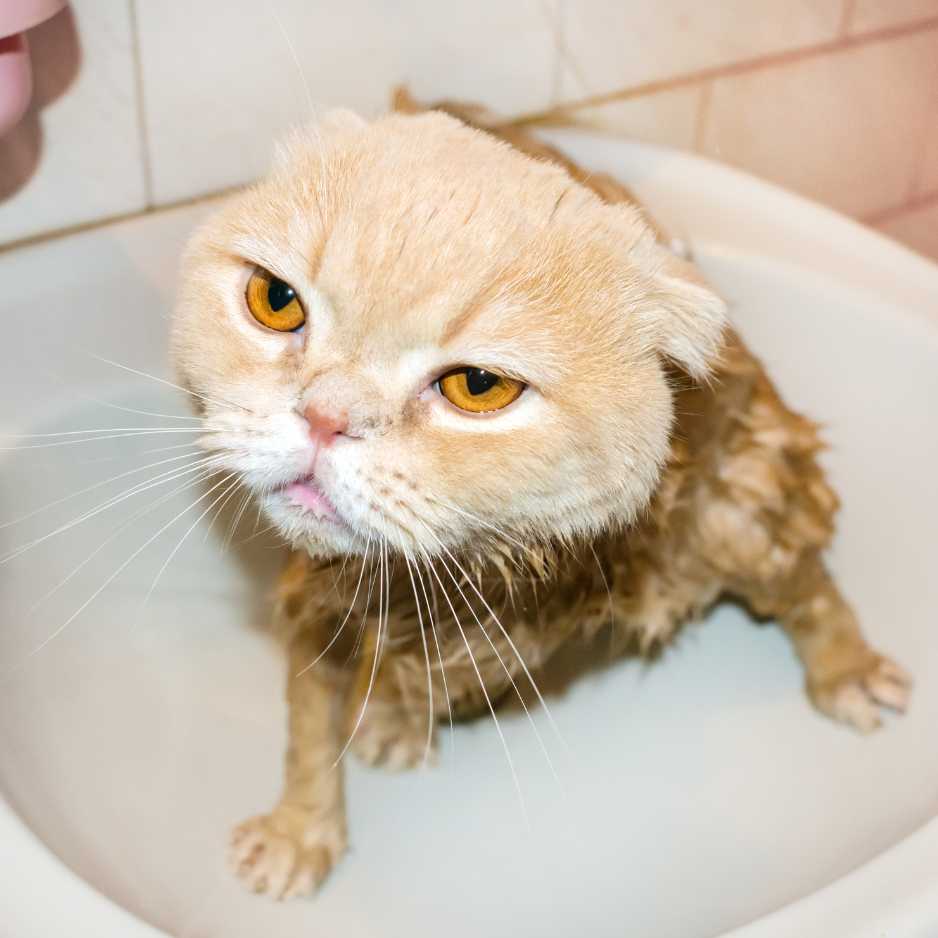
- One of the oldest breeds, the Persian breed has a rich history in the world of cats, dating back to notable figures like Pietro Della Valle. Persian cats are one of the oldest cat breeds, with a history that goes back over 400 years.
- Loved by Royalty: Persian cats, including the blue Persian and silver Persian, have been loved by royalty throughout history. Persian cats have a history of being owned by royalty and famous personalities, making them a symbol of class and elegance, often snubbed by those who prefer more common breeds. Even Queen Victoria was known to have Persian cats as pets.
- The Most Popular Cat in the United States: Persian cat’s consistently rank among the most popular cat breeds in the U.S. due to their friendly and docile temperament, which attracts many cat lovers.
- Quiet and Laid-Back Nature: The quiet and laid-back nature of the Persian cat makes them an ideal companion for those who appreciate a tranquil environment. Unlike some more vocal breeds, Persian cats tend to be relatively quiet, making them ideal for owners who prefer a calm home environment.
- Huge Variety of Colors: Persian cats come in nearly every colour, with over 80 recognized coat colours, including white, black, blue, cream, chocolate, lilac, and even patterns like tabby and bicolour; they are a type of cat known for their beauty.
- Not a Great Jumper: Due to their body structure, Persian cats, like other brachycephalic breeds, are not great jumpers compared to more agile breeds like the Siamese. Due to their stocky build and shorter legs, Persian cats, which have round eyes, aren’t known for jumping or climbing like other agile breeds, such as the Himalayan cat. They’re more likely to be found lounging at ground level or on lower surfaces, which is typical behaviour for the Persian breed.
- Persians in Pop Culture: The original Persian cat has made appearances in various films and shows, solidifying its place in the cat fancy. Persian cats have appeared in many movies and TV shows, often associated with luxury or high status, particularly the black Persian. A notable example is “Mr. Bigglesworth” from the Austin Powers a character that has been archived from the original and remains a pop culture icon. movies.
- Double-Coated Cats: Persian cats have a double coat, which includes a dense undercoat and a long, soft outer coat, making them unique among many cats. This is part of what makes their fur so thick and plush, characteristic of the original Persian breed.
- Longer Lifespan: With proper care, Persian cats can live a long, healthy life, often reaching between 12 to 17 years, a testament to their robust breed profile; Persian cats also need regular grooming to maintain their luxurious coats.
- Purr Machines: The purr of a Persian cat is often described as a soothing sound that enhances the peaceful atmosphere of a home. Persian cats have a strong, consistent purr that many owners find soothing, adding to their reputation as gentle and loving pets, making them a favourite among the International Cat Association.
Conclusion
Persian cats are a breed that brings grace, beauty, and tranquillity to any home, much like their Himalayan counterparts, and they often compete in cat shows for their stunning looks, demonstrating the prestige of the breed called Persian. While they require a bit more care in terms of grooming and attention to health, Persian cats reward their owners with deep affection and companionship, especially those with copper eyes. For those who have the time and resources to invest in their care, Persian cats can be a perfect choice for a loyal and gentle pet.


